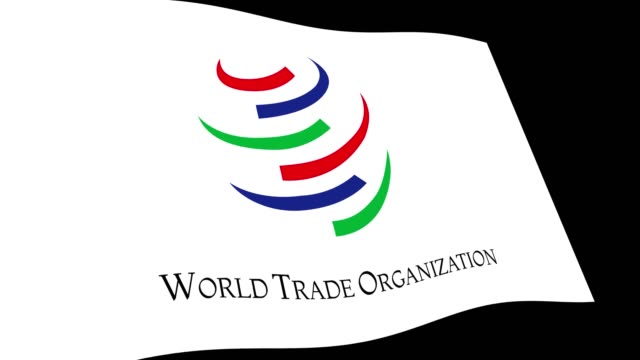 Introduction:
Introduction:
The World Trade Organization (WTO) stands as a pillar of the global economic system, facilitating international trade, promoting economic development, and fostering cooperation among its member states. Established in 1995, the WTO has played a central role in shaping the rules and regulations governing global commerce. However, its functions, challenges, and impact have been subject to scrutiny and debate. This article delves into the intricacies of the WTO, exploring its structure, objectives, key functions, challenges, and the role it plays in today's interconnected world.
Understanding the WTO:
At its core, the WTO is an intergovernmental organization that regulates international trade and commerce. It provides a platform for member countries to negotiate trade agreements, resolve disputes, and collaborate on matters related to trade policy. With 164 member states as of 2022, the WTO encompasses a significant portion of the world's economies, accounting for the majority of global trade.

Objectives and Principles:
The WTO operates under a set of principles aimed at promoting free and fair trade among nations. These principles include non-discrimination, whereby member countries must treat foreign and domestic goods and services equally, and reciprocity, which entails granting concessions in trade negotiations in exchange for similar concessions from other members. Additionally, the WTO seeks to facilitate trade liberalization, eliminate trade barriers such as tariffs and quotas, and ensure transparency and predictability in trade relations.
The WTO performs several key functions to fulfill its objectives:
1. Trade Negotiations: One of the primary functions of the WTO is to negotiate trade agreements among its members. These negotiations cover a wide range of issues, including tariffs, subsidies, intellectual property rights, and trade in services. The most notable round of negotiations was the Uruguay Round, which concluded in 1994 and led to the establishment of the WTO.
2. Dispute Settlement: The WTO provides a mechanism for resolving disputes between member countries regarding alleged violations of trade agreements. This process involves consultations, adjudication by dispute settlement panels, and appellate review by the Appellate Body. The rulings issued by the WTO dispute settlement system are binding and enforceable, serving to uphold the rules-based trading system.
3. Monitoring and Surveillance: The WTO monitors members' trade policies and practices, ensuring compliance with WTO rules and commitments. Through regular reviews and assessments, the WTO seeks to promote transparency and accountability in trade relations and identify areas where further action may be needed.
4. Technical Assistance and Capacity Building: The WTO provides technical assistance and capacity-building support to developing and least-developed countries to help them participate effectively in the global trading system. This assistance encompasses areas such as trade policy formulation, trade negotiations, and trade-related infrastructure development.
Challenges Facing the WTO:
Despite its overarching mandate and institutional framework, the WTO faces several challenges that impact its effectiveness and relevance in today's global economy:
1. Deadlock in Trade Negotiations: The WTO has struggled to advance substantive trade negotiations in recent years, with member countries often unable to reach consensus on key issues. The failure of the Doha Development Agenda, launched in 2001 with the aim of addressing the needs of developing countries, underscored the difficulties in reaching comprehensive trade agreements.
2. Dispute Settlement Crisis: The WTO's dispute settlement mechanism has faced challenges, including a crisis in the functioning of the Appellate Body due to the blockage of appointments by certain member countries. This has led to a backlog of cases and raised concerns about the efficacy and legitimacy of the dispute settlement system.
3. Rising Protectionism: The proliferation of trade barriers and protectionist measures among WTO members has hindered the organization's efforts to promote free and open trade. Tensions over issues such as tariffs, subsidies, and intellectual property rights have escalated, leading to trade disputes and retaliatory actions that undermine global economic stability.
4. Inequality and Development Disparities: Despite efforts to promote inclusive and equitable trade, disparities persist between developed and developing countries within the WTO framework. Developing countries often face challenges in accessing markets, building trade capacity, and benefiting from trade liberalization, exacerbating global economic inequality.
The Role of the WTO in Today's World:
Amidst these challenges, the WTO remains a critical institution in the governance of international trade. Its rules-based system provides a framework for managing trade relations and resolving disputes, offering stability and predictability in an increasingly interconnected world. Moreover, the WTO serves as a forum for dialogue and cooperation among its diverse membership, fostering consensus-building and collective action on pressing global trade issues.
Looking Ahead:
As the global economy continues to evolve and face new challenges, the role of the WTO will remain pivotal in shaping the future of international trade. Addressing the organization's institutional shortcomings, revitalizing trade negotiations, and promoting greater inclusivity and fairness in the global trading system will be essential to ensuring the WTO's relevance and effectiveness in the years to come. With concerted efforts and collective engagement, the WTO can continue to serve as a cornerstone of global economic governance, advancing prosperity, stability, and development for all its member countries.



You must be logged in to post a comment.